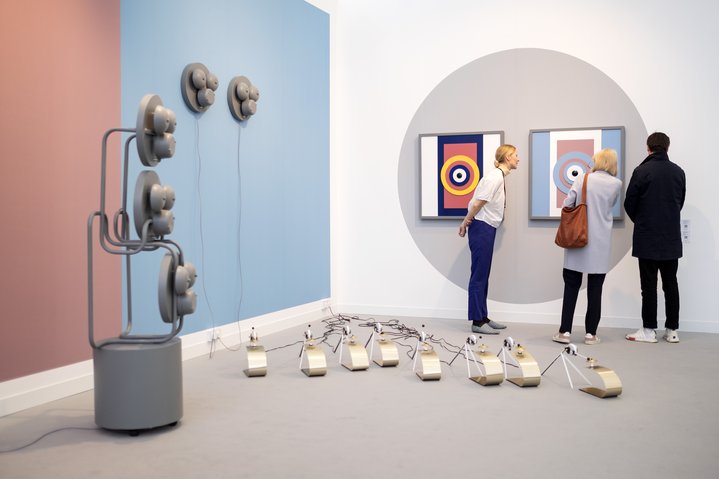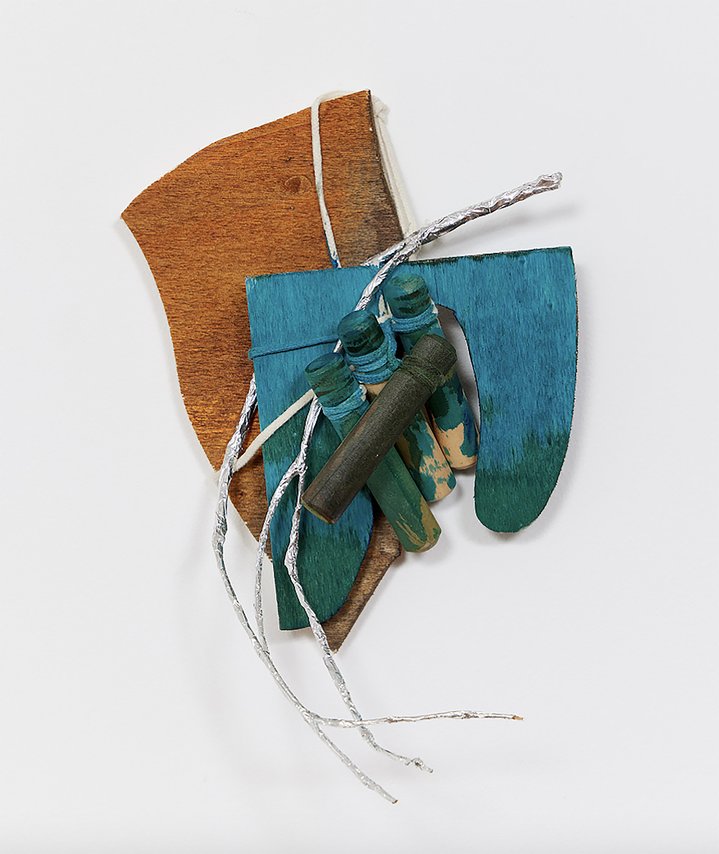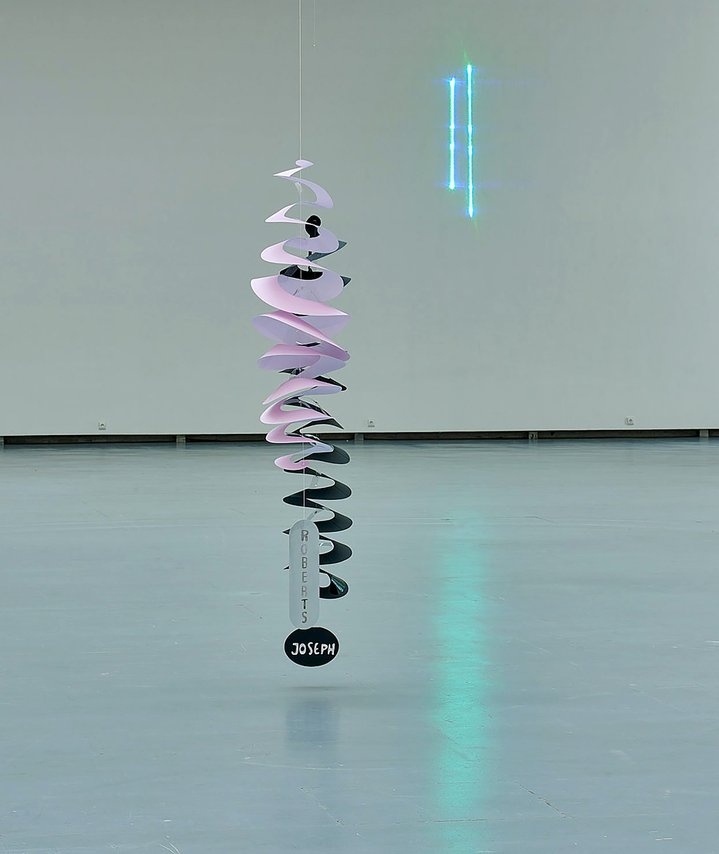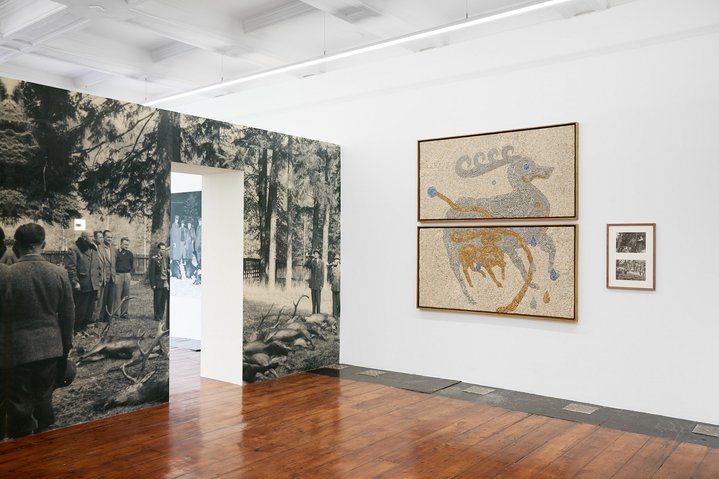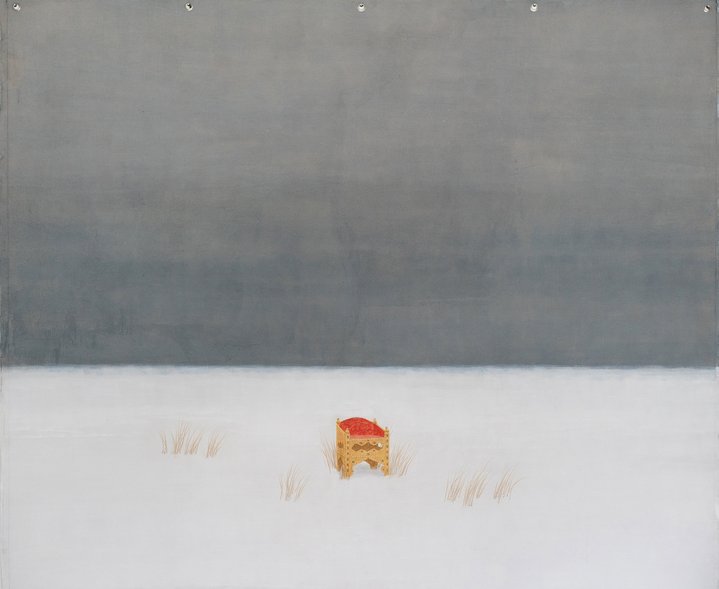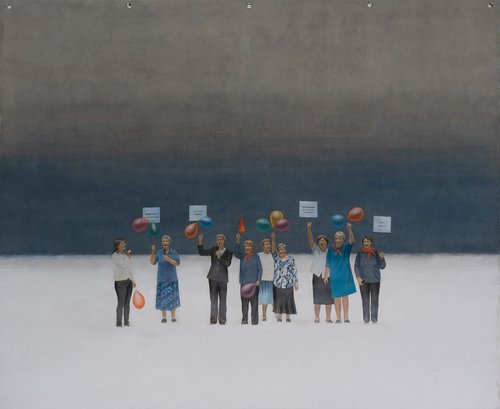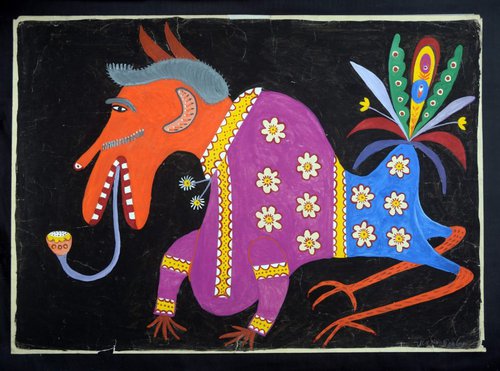Frozen out of Frieze London
Nearly two decades have passed since Eastern European countries joined the EU. Despite this era being defined by a democratisation of the art world, Frieze London shows us that integration into the mainstream art market has not happened for everyone and that art fairs are not the place to find art about our own times.
During Frieze week the biggest rumours were about US collectors going on a spending spree in London due to the unprecedented devaluation of the pound. However, their voracious appetite for art buying (North Americans still account for the biggest slice of the global art market) does not quite line every pocket. For most North American collectors, Eastern Europe is still terra incognito, despite the plethora of scholarly publications and museum research programmes which continue to redefine the field. Although US collectors are embracing a democratising movement in the arts, this is mostly focussed at home on redressing the gender imbalance in art, the Black Lives Matter movement with the discovery of Afro-American artists (extending to an interest in Continental African artists), Latin American artists and their diaspora in the US. The trends are so strong they are creating cliches, and new wealth around the world helps to keep it all frothy as well as expand the size of the market itself.
European collectors are not driving this change and have other concerns. London has now brexited. In Europe, right-wing populism has been putting up borders, and there is little evidence of collectors broadening their horizons wholesale for the greater good to embrace parts of the market which were previously on the periphery. The art market does not exist in a vacuum, collectors in the US are motivated by larger social trends, which are in turn fuelling the art market. It’s partly the power of the hashtag phenomenon and social media. Contemporary artists from Eastern Europe desperately need a hashtag cause, they need to be championed even more so because of these other democratising forces entering the art market and forming powerful trends which do not include them. They are literally being squeezed out. At Frieze, you could see the legacy of two decades of European integration: Eastern European countries were still in the newcomer’s category, Frieze Focus. This part of the fair occupied a small area in the main tent, and with its large mix of German, Austrian, Polish, and Baltic artists, you could be forgiven for thinking you were in Vienna, which has become an international hub of the ‘contemporary east’. Well over one third of the artists represented at Frieze Focus were from or connected to Eastern Europe. When it came to galleries, even though this section of the fair was exclusively for younger galleries, you could be forgiven for wondering where all more established Eastern European galleries have gone because there were none in the main edition of Frieze at all.
To build a deeper and broader, more authentic sense of democracy within the art world, ought one not spare a thought and a dime for artists from Eastern Europe? The field of artists and movements throughout the 20th century is extraordinarily rich and diverse and North American 20th century art and culture would be much poorer without the wave of emigration coming from east of Berlin. There was Moholy Nagy’s (1895–1946) decade in Chicago teaching at the School of Design; Latvian born Markus Rothkowitz (1903º1970) became one of North America’s cultural treasures, Lena Krassner’s (1908–1984) parents came to the US from the Ukraine; Andrew Warhola’s (1928–1987) parents emigrated from present day Slovakia.
It may have been the small fish in the large pond, but at Frieze Focus there was a refreshingly individual selection of works on view devoid of clichés, although nothing I saw referenced the global conflict right at the fringes of Eastern Europe or made any attempt to capture the current mood or social-political situation. If there was anything in common at all, it was modernist inspired, abstract works by Baltic artists. Gallery Temnikova and Kasela was exhibiting kinetic works by octogenarian Estonian artist Kaarel Kunismaa (b.1939), an established figure in the Baltics although little known internationally. Spanish based gallery PM8 who represents several Lithuanian artists, was showing works by Vilnius born artist Elena Narbutaite (b. 1984). Her work with paper and light focusses on natural effects which play with the physical properties of light and matter, contemporary yet with a strong modernist aesthetic. The booth was hung with a series of small origami paper squares in various colours with folds creating soft lines which appeared to change depending on where you stood. London based Emalin Gallery displayed abstract works by the Latvian sculptor Daiga Grantina (b.1985) small domestic tactile pieces to be hung on a wall which felt like quotations from the monumental sculptural pieces for which she is known, and which impressed everyone at Venice in 2019 when she represented Latvia at the Biennale.
Unsurprisingly there was no contemporary Russian art on show at Frieze, already over the past decade Russian galleries had disappeared not only from Frieze but other international fairs (the Russian collectors who used to buy on the international art market preferred more traditional works, or international contemporary classics rather than Russian contemporary art). The tinder keg situation because of the Russian-Ukraine conflict has led to calls for the exclusion of Russian artists around the world and just one week after Frieze a huge row erupted in Paris over the participation of Russian gallery Iragui at Paris Internationale art fair, leading to a Ukrainian artist collective refusing to take part despite having been given a free booth by the organisers. In London, however, there were two small-scale, yet outstanding Russian shows staged to coincide with Frieze week: Pavel Otdelnov’s ‘Acting Out’ at Pushkin House and Antufiev & Nalogina’s ‘We are a Long Echo of Each Other’ at Emalin’s gallery space in Shoreditch. London once had a reputation as a place where artists were free to do what they wanted, but politically the UK is in a relationship of cold war proportions with Russia. Leopold Thun, Emalin’s director admitted he had reservations about staging the exhibition ‘because of cancel culture’, fearing a backlash, but he not only went ahead with the show, he also reprogrammed his space at the last minute to ensure it was on view during Frieze week.
‘We are a Long Echo of Each Other’ is not at all about Antufiev & Nalogina’s artistic partnership, it is their attempt to find reasons in the past for what is happening today, asking ‘How has the Russian army ended up in Ukraine?’. Although the show itself leaves you to come to your own conclusions, the preamble in the form of the artists’ statement hanging at the entrance to the exhibition left no doubt as to their views that the aggressors must be stopped and prosecuted. For Thun, it turned out to be a good move. It was a commercial success, by the last day of Frieze, the show was nearly a sell-out. Antufiev’s aesthetic is appealing, despite the dark shadows of Empire behind the mosaics and gold pots making what otherwise could be mere decoration into more complex works requiring deeper reflection.
Pavel Otdelnov (b.1979) has recently moved to London and is setting up a studio there despite his desire to return to Russia; Evgeny Antufiev (b.1986) has been working already for many years in Western Europe. With the sustained pressures on the Atlantean shoulders of Russia’s liberal contemporary artists, many more have left the country since February, creating pockets of resistance abroad. Cancel culture in the West is wrong to blame and silence Russian contemporary artists because of the current situation, despite the horrors on the ground, many of whom like Antufiev and Otdelnov are desperately trying to question what is happening, raise awareness, cut through propaganda, and flag up injustices. They are bound by historical forces of such enormity, it is hard for them not to be shaped by them, or to address them in their work. The events are such that there is a kind of enormous collective trauma, which will take generations to process. Art fairs may not be the venue to reflect what is going on in our societies and worlds, perhaps we ought not expect this of them?
Back in the big top at Frieze I did find one work which captured for me something of the current times: Marina Abramovic’s (b.1946), ‘Artist Portrait with a Candle’ an edition she made ten years ago after a spiritual journey through Brazil and on sale at the Sean Kelly Gallery. In April this year the gallery staged a re-enactment of her 2010 ‘The Artist is Present’ performance, selling by auction on Artsy two lots in which the winning bidders would be photographed with the artist with the funds going to Direct Relief working with the Ukraine. Compassion knows no national borders.
Frieze London Fair
Evgeny Antufiev & Lyubov Nalogina. We are a long echo of each other
London, UK
30 September – 05 November, 2022
Pavel Otdelnov. Acting Out
London, UK
October 13, 2022 – January 28, 2023






